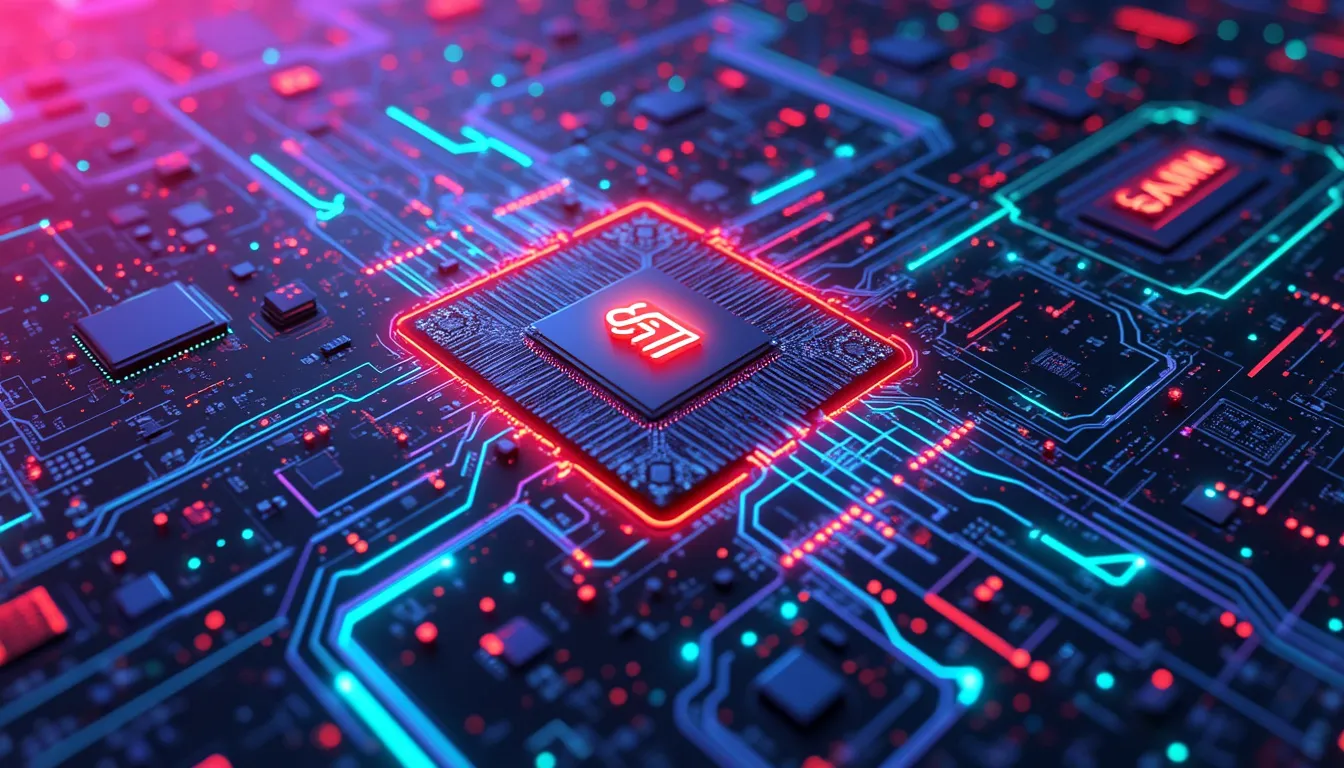The Chip Wars Heat Up: Nvidia’s AI Dominance Faces a Plot Twist
Picture this: You’re at a high-stakes poker game, and you’ve been holding the winning hand for what seems like an eternity. That’s Nvidia right now in the AI chip market. But as any seasoned player knows, the game can change in an instant. With a 98% market share in GPUs shipped to data centers, Nvidia has been living the dream of every tech company. But is this dream about to face a rude awakening?
Let’s dive into the world of silicon and circuits, where Nvidia’s story reads like a techno-thriller. The company’s data center revenues have skyrocketed by a mind-boggling 154% year-over-year. If that doesn’t make your circuits tingle, consider this: analysts are forecasting earnings growth of 139% this year and 43% the next. It’s as if Nvidia has found the philosopher’s stone of the digital age, turning bits and bytes into gold.
The Plot Thickens: Enter the Challengers
But every good story needs conflict, and Nvidia’s tale is no exception. AMD and Intel, once considered mere supporting characters, are now stepping into the spotlight with their own AI-accelerating GPUs. It’s like watching the underdogs in a sports movie montage, training hard to take on the reigning champion. These competitors are offering cheaper alternatives, threatening to chip away at Nvidia’s fortress-like market position.
And here’s where the plot takes an unexpected turn: Nvidia’s own clients are becoming potential rivals. Tech giants like Microsoft, Meta, Amazon, and Alphabet are developing their own AI chips. It’s as if the guests at a dinner party suddenly decided to open their own restaurants, leaving the host wondering if they’ll ever come back for another meal.
The Next Chapter: Nvidia’s Counterplay
But Nvidia isn’t about to let its story end here. The company is gearing up to launch its next-generation GPU platform, Blackwell, in the latter half of 2024. And for those who love a good sequel, there’s already talk of the Rubin architecture coming in 2026. These aren’t just product launches; they’re Nvidia’s declaration that it plans to stay ahead in the compute capabilities arms race, especially in areas like generative AI and quantum computing.
Yet, even as Nvidia plans its next move, new challenges emerge. The company is facing a real estate crunch in high-compute data centers, struggling to meet the massive demand for its chips. It’s like trying to build a megacity when there’s barely enough land for a village. This space constraint, coupled with the entry of cheaper alternatives, could impact Nvidia’s pricing power and margins.
As we close this chapter of Nvidia’s ongoing saga, one question remains: In this high-stakes game of technological chess, will Nvidia maintain its kingdom, or are we witnessing the beginning of a new balance of power in the AI chip market? Only time will tell, but one thing’s for certain – the next move in this tech thriller will be one to watch.
Want to stay updated on the latest in AI and tech stocks? Subscribe to our newsletter for more insights and analysis. And tell us, what do you think will be the next big disruption in the AI hardware market?









